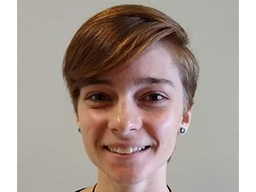PhD Proposal: Emily Faber
Location
Physics : 401
Date & Time
April 28, 2022, 11:30 am – 1:30 pm
Description
ADVISOR: Dr. Adriana Rocha Lima
TITLE: Impacts of Surface Winds on Dust Emissions: Comparison of Measurements and Models to Improve Model Parameterization and Further Understanding of Sub-Grid Processes
ABSTRACT: Understanding the physics between meteorological measurements and long-term climate modeling is an important and ongoing endeavor. One long-term goal of global climate models is to better represent aerosols, aerosol life cycle, and aerosol radiative effects. One of the most abundant aerosols in the atmosphere at any given time is mineral dust, which has direct and indirect effects on the radiation balance of the planet in proportion to dust mass concentration. In this proposal, an approach to processing, understanding, and quantifying the underlying physics of dust mass emission is outlined, and preliminary results are reported. Dust emissions are highly correlated with surface wind speed, which is more readily available, and thus surface wind speed is useful to indicate where overall trends in dust mass emissions might exist and be readily available for further study. One of the most reliable and complete models available is the Goddard Earth Observing System Model (GEOS) model. GEOS has assimilation capability, integrating global climate model systems with grid point statistical interpolation to better support earth science research. GEOS outputs a data product – MERRA-2 reanalysis (Modern-Era Retrospective analysis for Research and Applications, Version 2) - which is used here to explore modeled surface wind speeds and dust emissions. The National Oceanic and Atmospheric Administration (NOAA) maintains a long-running, high-quality Integrated Surface Database (ISD) that contains meteorological measurements for stations around the world. This project will build a database of co-located, time-correlated data from each ISD and MERRA-2 to explore the long-term variability of surface winds, sub-grid variability, seasonal cycles, and sub-grid phenomena, and propagate differences through runs of GEOS to quantify the impact that different wind fields have on model dust emission output and AOD.
TITLE: Impacts of Surface Winds on Dust Emissions: Comparison of Measurements and Models to Improve Model Parameterization and Further Understanding of Sub-Grid Processes
ABSTRACT: Understanding the physics between meteorological measurements and long-term climate modeling is an important and ongoing endeavor. One long-term goal of global climate models is to better represent aerosols, aerosol life cycle, and aerosol radiative effects. One of the most abundant aerosols in the atmosphere at any given time is mineral dust, which has direct and indirect effects on the radiation balance of the planet in proportion to dust mass concentration. In this proposal, an approach to processing, understanding, and quantifying the underlying physics of dust mass emission is outlined, and preliminary results are reported. Dust emissions are highly correlated with surface wind speed, which is more readily available, and thus surface wind speed is useful to indicate where overall trends in dust mass emissions might exist and be readily available for further study. One of the most reliable and complete models available is the Goddard Earth Observing System Model (GEOS) model. GEOS has assimilation capability, integrating global climate model systems with grid point statistical interpolation to better support earth science research. GEOS outputs a data product – MERRA-2 reanalysis (Modern-Era Retrospective analysis for Research and Applications, Version 2) - which is used here to explore modeled surface wind speeds and dust emissions. The National Oceanic and Atmospheric Administration (NOAA) maintains a long-running, high-quality Integrated Surface Database (ISD) that contains meteorological measurements for stations around the world. This project will build a database of co-located, time-correlated data from each ISD and MERRA-2 to explore the long-term variability of surface winds, sub-grid variability, seasonal cycles, and sub-grid phenomena, and propagate differences through runs of GEOS to quantify the impact that different wind fields have on model dust emission output and AOD.
